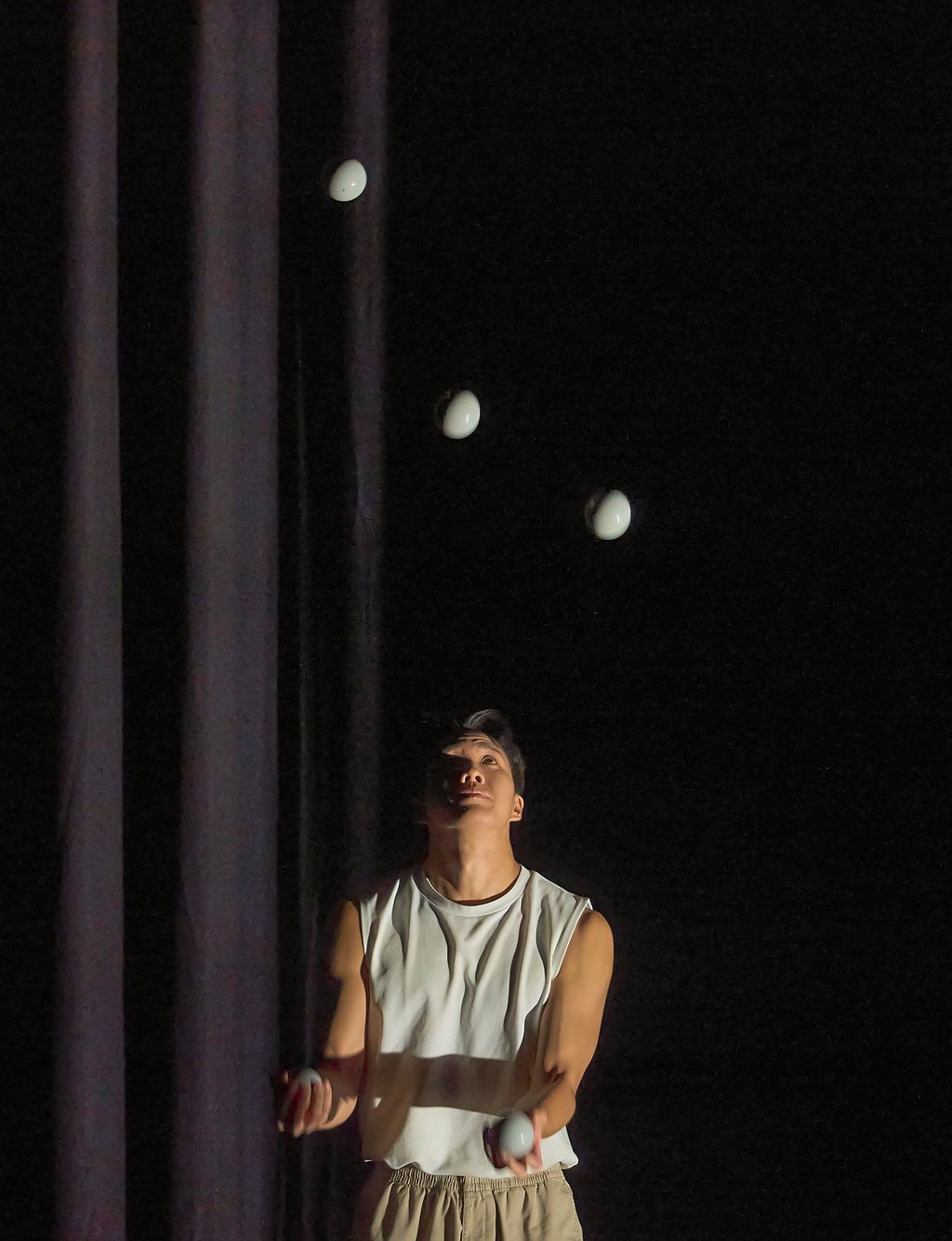Why a juggler decided to let the ball drop
The artists of the New Boom in Circus programme at Tai Kwun in Hong Kong are rethinking the contemporary art form

Jason Lee always imagines an arc, an invisible trajectory between one hand and the other, every time he sends his juggling balls flying over his head. It is an art of precision, and little errors have big consequences, especially in front of an audience.
To perfect the art, jugglers repeat the same motions until the voices – “Can I catch it?”, “Will I drop it?”, “Did I leave the stove on?” – fade into silence. Now 26, Lee has been mastering this inner quietude for more than a decade. His journey began when a pastoral assistant at his school introduced him to the diabolo, the Chinese yo-yo, where you balance and toss a double-sided conical object on a string held between two sticks. From there, he fell under the spell of Japanese juggler Komei Aoki, whose seamless fusion of popping and juggling inspired Lee to create his own style. By 18, he had turned his passion into a profession, juggling on streets and at events, even teaching the art to schoolchildren.
This past December marked a significant milestone in Lee’s career. For the first time, he brought his craft onto a theatre stage, performing for three consecutive days at Tai Kwun’s JC Cube alongside Taiwanese circus artist Tito Hung. Together, they presented On the Side of the Road, a 45-minute performance they had crafted over the course of the year.

What most people think of as a circus features death-defying feats such as trapeze artists, tightrope walkers and lions leaping through rings of fire. But as far back as the 1970s, half a century after Barnum and Bailey’s Greatest Show on Earth, nouveau cirque began to move beyond mere spectacle, and more towards thematic storytelling. Contemporary circuses still include aerial acrobatics, dancing, juggling, clowning and puppetry, but artists mostly weave these skills into cohesive narratives, incorporating themes, storylines and original music scores.